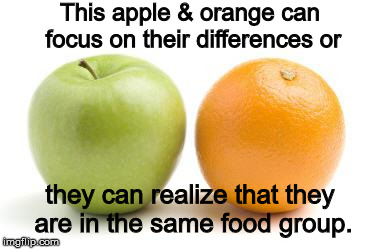By K. Tran
Have you ever wanted to reaffirm your stance in your arguments, but you do so somewhat conversationally? I do, too! The authors of They Say/I Say defines metacommentary as “a way in commenting on your claims and telling others how–and how not–to think about them.” Typically, metacommentaries appear as effective indicators of where my main argument is located. For example, if I am to respond to an opposing viewpoint on the government reforming public education, I would say, “My point is that if education is better restructured to incorporate more technology and hands-on learning, tailoring to the newer generation of the youth, then the youth may find newfound importance and applicability in what they learn at school for their future careers.”
Also, transitional words or phrases function as metacommentary to effectively illustrate what you are arguing for. For example, during a compare and contrast of apples and oranges, one may say they are both fruit that grows on trees. You can respond with a countering metacommentary such as “but.” So you would say “But oranges differ because they are citrus whereas apples are not.”

I believe metacommentaries are important because they help guide the reader to understand your argument better, and your essay would be less likable to read if the evidence and reasonings are just tossed together like a salad. In other words, if the essay doesn’t flow nicely, then I won’t read it because I will find it more difficult to connect ideas as easily than without the metacommentaries. This may be a problem for some writers because clearly communicating their argument is already difficult enough without the commentaries. Now I would suggest watching some debates or reading more news articles to see how they commincate their argument nicely.
